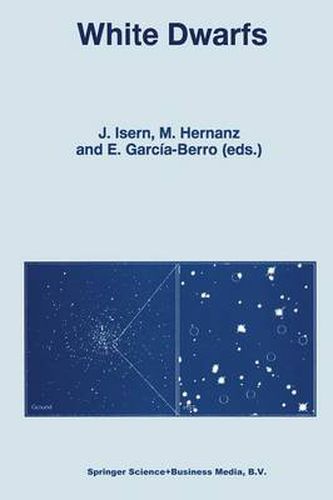Readings Newsletter
Become a Readings Member to make your shopping experience even easier.
Sign in or sign up for free!
You’re not far away from qualifying for FREE standard shipping within Australia
You’ve qualified for FREE standard shipping within Australia
The cart is loading…






This title is printed to order. This book may have been self-published. If so, we cannot guarantee the quality of the content. In the main most books will have gone through the editing process however some may not. We therefore suggest that you be aware of this before ordering this book. If in doubt check either the author or publisher’s details as we are unable to accept any returns unless they are faulty. Please contact us if you have any questions.
The study of white dwarfs has been steadily growing during the last years and now is a mature field extending its influence over many others. Since white dwarfs are long lived objects, they can be used to obtain information about the history of the Galaxy. The simplicity of their structures enables them to act as precise particle physics laboratories and the extreme con ditions reached at their surfaces allow us to test the equation of state and to study the behavior of matter under conditions impossible to be reached in terrestrial laboratories. Nevertheless, white dwarfs are still challenging astrophysicists. Many questions, ranging from the determination of funda mental parameters to the evolution of their outer layers, are still waiting for a satisfactory answer. The European Workshop series on White Dwarfs started in 1974 as a con sequence of the effort and enthusiasm of Professor Volker Weidemann. The existing proceedings of these meetings, together with those corresponding to the lAU Colloquia held in Rochester (1979) and in Hanover (1988), provide a unique opportunity to follow the development of this field. We hope that the present volume will provide a representative snapshot of the state of the art in 1996. In this sense we are very indebted to all the participants that have sent their contributions according to the instructions (this clearly excludes everybody beyond three sigmas from the standards).
$9.00 standard shipping within Australia
FREE standard shipping within Australia for orders over $100.00
Express & International shipping calculated at checkout
This title is printed to order. This book may have been self-published. If so, we cannot guarantee the quality of the content. In the main most books will have gone through the editing process however some may not. We therefore suggest that you be aware of this before ordering this book. If in doubt check either the author or publisher’s details as we are unable to accept any returns unless they are faulty. Please contact us if you have any questions.
The study of white dwarfs has been steadily growing during the last years and now is a mature field extending its influence over many others. Since white dwarfs are long lived objects, they can be used to obtain information about the history of the Galaxy. The simplicity of their structures enables them to act as precise particle physics laboratories and the extreme con ditions reached at their surfaces allow us to test the equation of state and to study the behavior of matter under conditions impossible to be reached in terrestrial laboratories. Nevertheless, white dwarfs are still challenging astrophysicists. Many questions, ranging from the determination of funda mental parameters to the evolution of their outer layers, are still waiting for a satisfactory answer. The European Workshop series on White Dwarfs started in 1974 as a con sequence of the effort and enthusiasm of Professor Volker Weidemann. The existing proceedings of these meetings, together with those corresponding to the lAU Colloquia held in Rochester (1979) and in Hanover (1988), provide a unique opportunity to follow the development of this field. We hope that the present volume will provide a representative snapshot of the state of the art in 1996. In this sense we are very indebted to all the participants that have sent their contributions according to the instructions (this clearly excludes everybody beyond three sigmas from the standards).